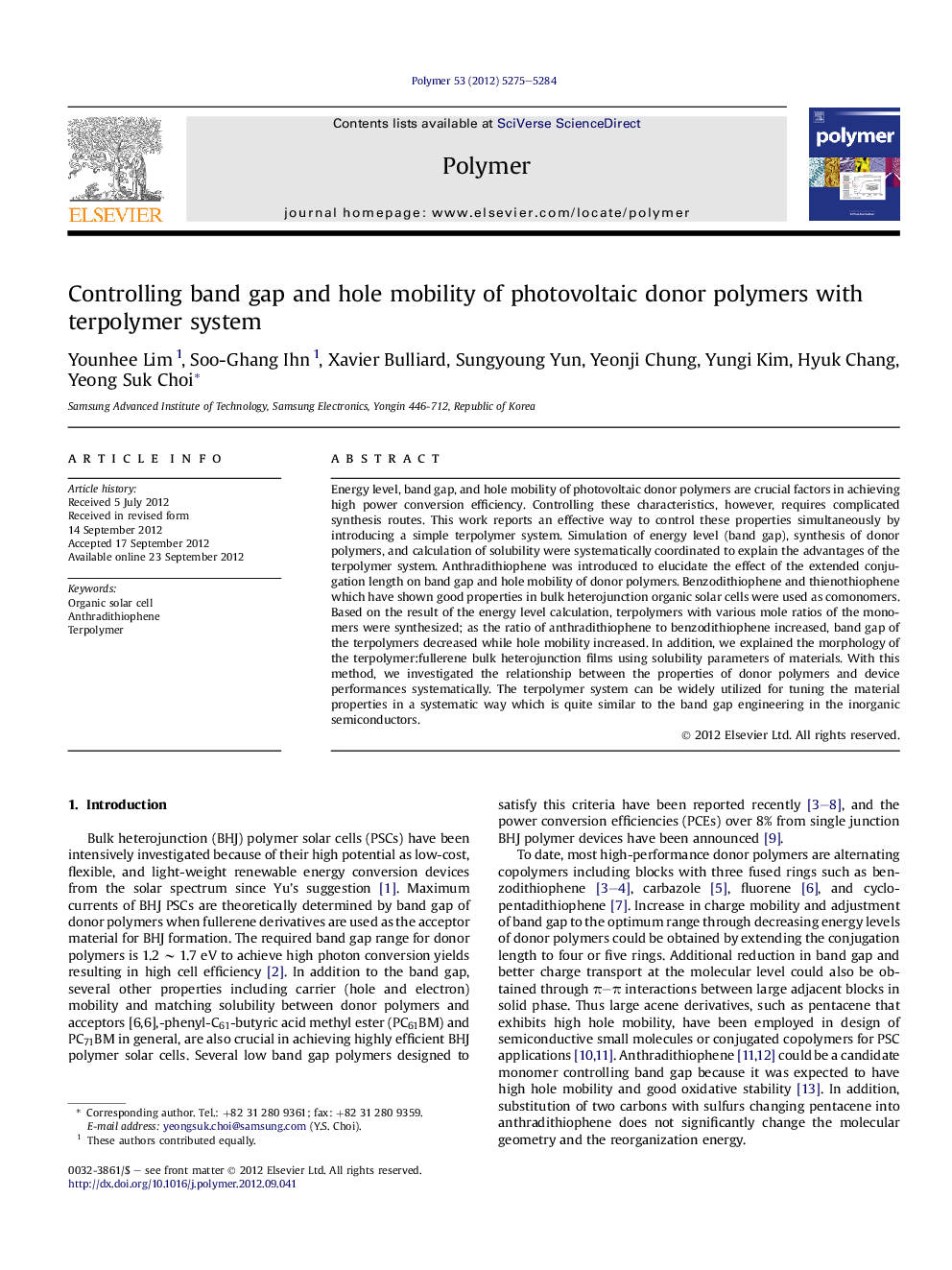| Article ID | Journal | Published Year | Pages | File Type |
|---|---|---|---|---|
| 5183084 | Polymer | 2012 | 10 Pages |
Energy level, band gap, and hole mobility of photovoltaic donor polymers are crucial factors in achieving high power conversion efficiency. Controlling these characteristics, however, requires complicated synthesis routes. This work reports an effective way to control these properties simultaneously by introducing a simple terpolymer system. Simulation of energy level (band gap), synthesis of donor polymers, and calculation of solubility were systematically coordinated to explain the advantages of the terpolymer system. Anthradithiophene was introduced to elucidate the effect of the extended conjugation length on band gap and hole mobility of donor polymers. Benzodithiophene and thienothiophene which have shown good properties in bulk heterojunction organic solar cells were used as comonomers. Based on the result of the energy level calculation, terpolymers with various mole ratios of the monomers were synthesized; as the ratio of anthradithiophene to benzodithiophene increased, band gap of the terpolymers decreased while hole mobility increased. In addition, we explained the morphology of the terpolymer:fullerene bulk heterojunction films using solubility parameters of materials. With this method, we investigated the relationship between the properties of donor polymers and device performances systematically. The terpolymer system can be widely utilized for tuning the material properties in a systematic way which is quite similar to the band gap engineering in the inorganic semiconductors.
Graphical abstractDownload full-size image
